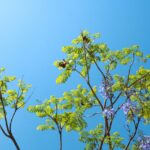Discover Fascinating Chaparral Biome Animals: Expert Insights

Are you ready to embark on a thrilling journey through the wonders of chaparral biome animals? Look no further, as this article is here to provide you with expert insights into the captivating world of these unique creatures. As a highly skilled wildlife biologist with a deep passion for studying and writing about chaparral biome animals, my knowledge and experience allow me to offer you an in-depth understanding of their lives and the enchanting environment they call home. Get ready to unravel the secrets of the chaparral biome and explore the astonishing adaptations and ecological relationships that make these animals truly fascinating. Whether you’re a wildlife enthusiast or simply curious about the natural world, this article is sure to leave you in awe of the wonders that lie within the chaparral biome.
Chaparral Biome Animals
When it comes to the diverse and fascinating animal species that inhabit the chaparral biome, there is so much to discover. This unique and striking habitat, characterized by dense evergreen shrubs and grasses, is home to a wide array of wildlife. Whether we’re talking about the European chaparral or the chaparral biomes in the Americas, Australia, or South Africa, each region has its own set of fauna that has adapted to thrive in this dry and challenging environment.
In the European chaparral, you can find wild boar, eagles, rabbits, and sheep among the common animals. These species have evolved to cope with the hot summers and mild, wet winters that are characteristic of the Mediterranean Basin, which is a prime example of the chaparral biome. Meanwhile, the Americas boast a unique set of chaparral animals, including jackrabbits, mule deer, coyotes, lizards, and a diverse range of birds and insects.
One of the fascinating aspects of the chaparral biome is the wide variety of insect species that call it home. From praying mantis and ladybugs to the ethereal beauty of butterflies, the insect life in the chaparral is highly diverse and plays a crucial role in the ecosystem. These small creatures are vital for pollination, contributing to the reproduction of the chaparral’s plant life.
Let’s not forget about the birds that grace the skies of the chaparral. Creatures like hummingbirds, roadrunners, and vultures are just a few of the bird species that thrive in this unique landscape. With their ability to adapt to the chaparral’s hot and dry climate, these avian residents carve out their niches in the ecosystem, hunting for insects and small creatures while also pollinating plants.
As we move to the reptilian inhabitants of the chaparral biome, we encounter a fascinating and often misunderstood group of animals. From lizards that bask in the sun to absorb heat to rattlesnakes, including the San Diego gophersnake, and even the mighty Komodo dragon found in the chaparral areas of Australia, reptiles have developed remarkable adaptations to survive in this arid environment.
Lastly, let’s explore the mammalian residents of the chaparral. In addition to the kangaroos found in Australia, other common mammals include rabbits and mule deer. These creatures have developed various strategies to find water and food during the dry spells of the chaparral biome. From efficient water conservation mechanisms to specialized diets and behaviors, the mammalian fauna of the chaparral is a testament to the adaptability and resilience of wildlife.
In conclusion, the chaparral biome is a captivating environment that supports a diverse range of animals. From the European to the American chaparral, and from insects and birds to reptiles and mammals, each species has its unique adaptations to cope with the challenging conditions of the chaparral. Understanding their ecological relationships and uncovering their incredible abilities is paramount for appreciating the richness and beauty of this extraordinary habitat.
“The chaparral biome is a vibrant tapestry of life, where every creature has mastered the art of survival in the face of adversity.”
Chaparral biomes are captivating ecosystems, filled with a unique blend of plants and animals that have adapted to survive in the harshest of conditions. From mysterious cacti to elusive carnivores, the chaparral biome offers a world of wonders waiting to be explored. If you are curious to uncover some fascinating facts about this remarkable habitat, click here to delve into the interesting facts about the chaparral biome. You’ll be amazed at the resilience and diversity of life that thrives in this enchanting environment. So, why wait? Embark on a journey of discovery and be mesmerized by the secrets hidden within the chaparral biome.
URL: interesting facts about the chaparral biome

FAQ
Question 1
What is the chaparral biome?
Answer 1
The chaparral biome is a dry area typically found in coastline regions, characterized by dense evergreen shrubs and grasses.
Question 2
What kind of wildlife can be found in the chaparral biome?
Answer 2
The wildlife in the chaparral biome varies from location to location. In Europe, common animals include wild boar, eagles, rabbits, and sheep, while the Americas are home to jackrabbits, mule deer, coyotes, lizards, and an array of birds and insects.
Question 3
What are some common insect species in the chaparral biome?
Answer 3
Some common insect species in the chaparral biome include praying mantis, ladybugs, and butterflies.
Question 4
What bird species can be found in the chaparral biome?
Answer 4
Bird species found in the chaparral biome include hummingbirds, roadrunners, and vultures.
Question 5
What reptiles and mammals inhabit the chaparral biome?
Answer 5
Reptiles that inhabit the chaparral biome include lizards, rattlesnakes, San Diego gophersnakes, and Komodo dragons. Mammals that can be found in the chaparral biome include kangaroos, rabbits, and mule deer.
- Unveiling the Enigma: Mansoureh Khojasteh Bagherzadeh’s Public Appearances & Private Life in Iran - July 18, 2025
- Unveiling the Mystery: Mansoureh Khojasteh Bagherzadeh’s Husband: A Rare Glimpse into a Private Life - July 18, 2025
- Unveiling Masoud Khamenei’s Mother: Power, Influence, and Iran’s Future - July 18, 2025
















